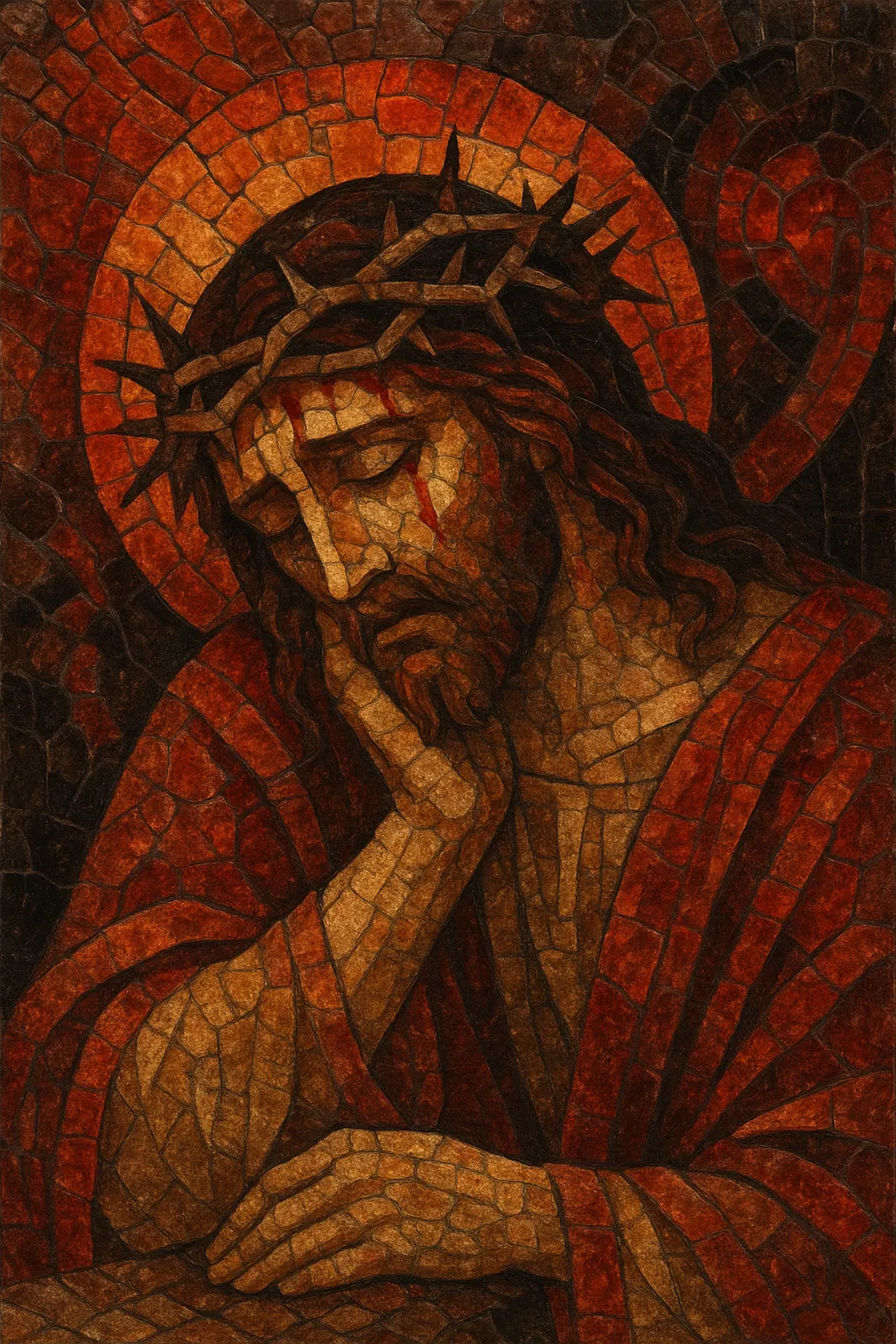A Passion is a large‑scale sacred musical genre that sets the Gospel narrative of Christ’s suffering and crucifixion (the Passion) to music. It originated as liturgical chant and evolved into elaborate polyphonic and Baroque oratorio forms.
Typical Baroque Passions feature an Evangelist (tenor narrator) who declaims the biblical text in recitative, solo roles for Jesus (Christus) and other characters, congregational-style chorales, reflective arias, and dramatic "turba" choruses representing the crowd. Earlier Renaissance Passions are often austere and predominantly choral, while Catholic traditions favored Latin and Protestant (especially Lutheran) Passions used vernacular German.
Passions were historically performed during Holy Week, often in two parts surrounding a sermon, and are among the most revered monuments of Christian sacred music.
Passion music began in the Middle Ages as plainchant (tonus Passionis), with the narrative chanted by different clerics taking distinct roles (Evangelist, Christus, and the "turba" or crowd). These early settings were entirely liturgical, sung in Latin and integrated into Holy Week services.
In the 1500s, composers developed polyphonic Passions. Catholic masters such as Tomás Luis de Victoria and Orlando di Lasso wrote through-composed or semi-polyphonic settings that retained textual clarity while deepening expression. The style remained largely austere, prioritizing intelligibility and devotional gravity over virtuosity.
After the Reformation, Passions in German lands adopted vernacular texts from Luther’s Bible and incorporated congregational chorales. Heinrich Schütz helped shape the dramatic and rhetorical approach that would culminate in the oratorio Passion. The alternation of narrative recitative, choral responses, and chorales became a hallmark.
By the 1600s and early 1700s, the Passion absorbed oratorio techniques: accompanied recitative, da capo arias, and large, expressive choruses. Composers such as Reinhard Keiser, Georg Philipp Telemann, George Frideric Handel, and ultimately J. S. Bach created masterworks that framed the biblical story with meditative poetry and hymn-based chorales. Bach’s St. Matthew and St. John Passions (1720s–30s) established the canonical two-part structure, rich orchestration, and intense dramatic rhetoric.
In the later 18th century, C. P. E. Bach, Carl Heinrich Graun, and others sustained the tradition, often simplifying textures in line with emerging classical style. The 19th century saw revivals (notably Mendelssohn’s 1829 performance of Bach’s St. Matthew Passion), leading to renewed appreciation. The 20th and 21st centuries expanded the idiom with modern language and sonorities (e.g., Penderecki’s St. Luke Passion, Arvo Pärt’s Passio, James MacMillan’s St. John Passion), demonstrating the form’s enduring spiritual and dramatic power.
Start from a Gospel Passion (Matthew, Mark, Luke, or John), ideally in a translation consistent with your performance context (Latin for Catholic tradition; German for Lutheran). Decide on an oratorio layout in two parts, with the narrative carried by an Evangelist and reflective movements (arias/chorales) placed at key moments.
Use SATB choir, vocal soloists (Evangelist—tenor; Christus—bass; additional soloists for Pilate, Peter, etc.), and orchestra with basso continuo (organ/harpsichord, cello/bassoon). Add obbligato instruments (e.g., flute, oboe, viola da gamba) for color in arias. Include congregational- or choir-sung chorales to ground the work devotionally.
Alternate secco recitative (Evangelist narration) with accompagnato recitative (heightened drama) and arias that poetically meditate on the events. Compose turba choruses with rhythmic drive and contrapuntal energy to depict the crowd. Harmonically, lean on clear tonal centers and rhetorical cadences in the Baroque style; for Renaissance idioms, employ modal counterpoint with careful text declamation.
Integrate well-known chorale melodies (Lutheran tradition) with harmonizations that reflect the text’s affect—more dissonant for anguish, radiant for consolation. Use recurring motives to bind the narrative and highlight theological themes (e.g., cross, blood, redemption).
Employ text painting and rhetorical figures: suspensions for sorrow, chromatic descent for lament, stark homophony for dread, and luminous triads for hope. Pace the drama: reserve full forces for climaxes, keep recitatives flexible, and balance reflective arias with vigorous choruses.
For historically informed results, consider Baroque articulation, terraced dynamics, gut strings, period winds, and A=415 tuning. Keep continuo realization supple to support recitative speech rhythms, and shape chorales with clear phrasing and congregational ethos.


